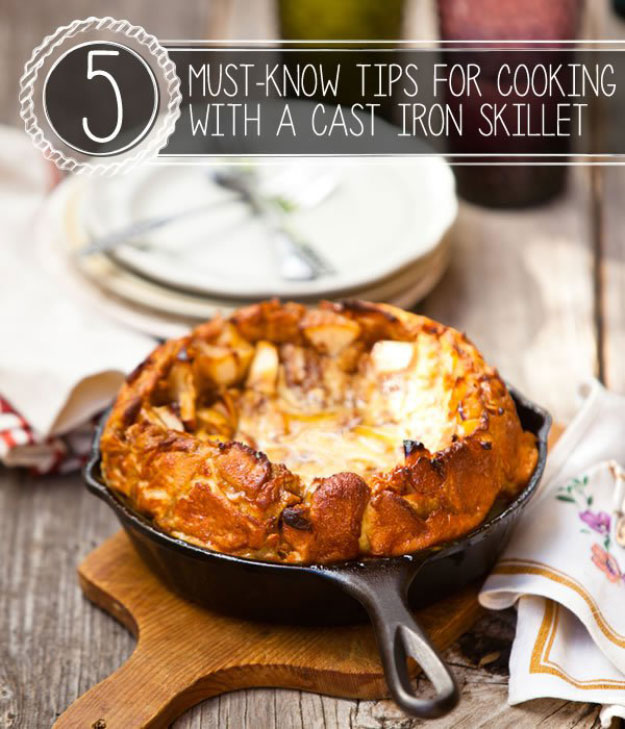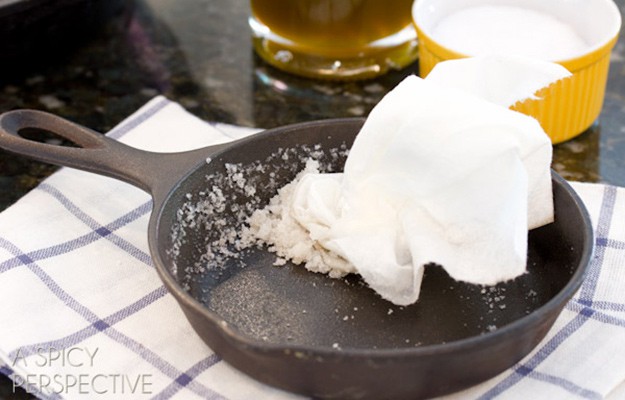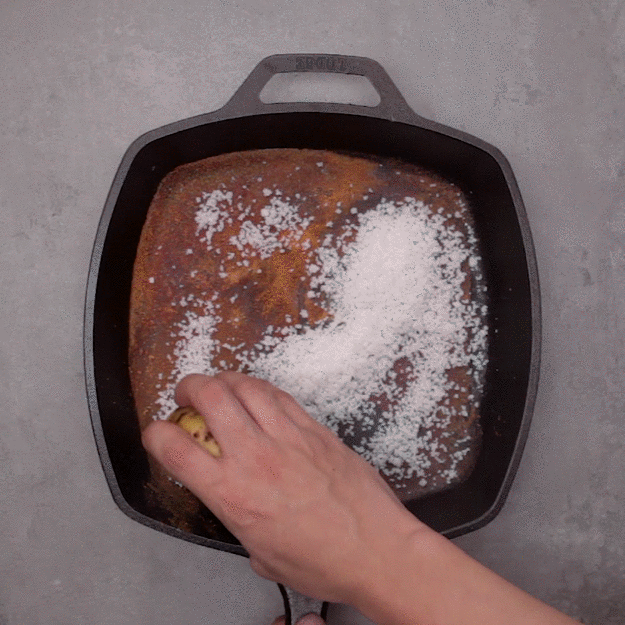A cast iron skillet may look out of place in a modern, high-tech kitchen, but it definitely is a homestead staple. This heavy, clunky cookware is inexpensive and nearly indestructible. It can cook about anything, and, when ‘seasoned' properly, is the original non-stick material. What more could a homesteader ask for?

Cooking and Seasoning Tips for a Cast Iron Skillet
If you're a beginner homesteader, using this unconventional cookware may pose a wee bit of a challenge. But fear not, we have five tips for you to make cooking with a cast iron skillet easier! Don't have a cast iron skillet? Grab one here!
Tip 1: How To Season
Using a new cast iron skillet can be aggravating, especially if you're a first timer. However, if you season it properly, cooking in an iron skillet is a breeze. First, you wash it and dry it. Then you slather it with a thin layer of shortening or oil, and stick it in a preheated 325-degree oven for a couple of hours. Allow it to cool completely before using. Iron is a very porous material which means that the thin layer of oil will fill in the pores so that air, bacteria and food you cook with does not fill it and ruin the metal. Get the step by step breakdown here.
Tip 2: How To Cook
When using your cast iron cookware, preheat it first before putting in your ingredients. Cook over low heat as too much heat can crack a cast iron. If you're frying eggs or pancakes, make sure to melt the lard or oil first. Like any other non-stick cookware, it is best not to use metal utensils. You're going to love these savory dinner recipes.
Tip 3: How To Remove Leftovers

- image via aspicyperspective
Deal with stubborn bits of food by pouring 1 cup of coarse kosher salt into the still-warm skillet. Use a folded kitchen towel or a non-abrasive cloth to scour. Discard salt and food bits, and rinse the skillet with hot water. Use cleaning process to finish.
Check out these amazing cast iron #skillet #recipes http://t.co/yWPJRz815E pic.twitter.com/50EhqKrJnw
— Homesteading (@HomesteadingUSA) May 20, 2015
Tip 4: How To Clean
Cleaning a new cast iron skillet can be a real chore. But once you get the hang of it and when it's already ‘seasoned', cast iron is as easy to care for as any other non-stick cookware.
Do not pour cold water over a hot skillet, this will cause your cookware to crack. After cooking, allow it to cool off before washing it.
You can use soap and water to clean your skillet before seasoning it. After that, never use soap again. NEVER. Use hot water to wash your skillet and wipe out your pan with a non-abrasive cloth to clean, this preserves the seasoning. After wiping, recoat it with a thin layer of coconut or olive oil.
Tip 5: How to Restore

Rust got you down? Don't even worry. Cover it in salt and scrape all the gunk away with a halved potato. These 2 simple food staples will save your life.
BONUS: How To Store

- image via Remodelista
Store skillet in a cool, dry place. If you have several cast iron skillets and need to stack them, place a towel in between the pans to absorb moisture and prevent scratching the seasoning.
Have you ever encountered any problems using a cast iron skillet? What are your best tips for cast iron cooking? Share your insight in the comments section below.
Now that you're cast iron skillet is good to go, you've got to start using it. Check out my my favorite Cast Iron Skillet Recipes:
- 21 Savory Cast Iron Skillet Dinner Recipes
- 20 Cast Iron Skillet Recipes
- 12 Cast Iron Skillet Dessert Recipes

I bought several really caked on pans from rummage sales and they were really disgusting and cheap. I put both pans into my wood stove ( or you could use a fire pit or a fireplace) while it was being used. The pan was like new afterwards, you do have to re-season it but at least all the disgusting cooked on food was gone.
Hi Joanna, thanks for this helpful article. I have a cast iron pot about 8 or 9 years old which has some rust in it – would your method work to restore it to it’s original condition?
Thanks again,
Maggie
Maggie, I’ll refer you to Connie’s comment: I bought several really caked on pans from rummage sales and they were really disgusting and cheap. I put both pans into my wood stove ( or you could use a fire pit or a fireplace) while it was being used. The pan was like new afterwards, you do have to re-season it but at least all the disgusting cooked on food was gone.
We appreciate Connie’s comment but,as cookware can effect our health, would appreciate more details.
I have a set of skillets (35 yrs), passed down by my mother- she most likely acquired from rummage sales (? yrs), that I use regularly. Note that I violate one of your five tips, using a metal spatula to scrap burnt food from bottom of skillet. Rust is oxidized iron and good for us but oxidized iron ? Maybe not so good for us ?!?
Yes, I keep them well greased before use and after cleaning but there is always a little rust on the towel when I wipe the skillet, showing traces of oxidized iron / rust.. Have you ever worn out a skillet ? Are the inner layers of iron exposed from years of scrapping away small surface layers safe to continue using ?
This question has been on my mind for a long time so I appreciate having found PIONEER SETTLER and your informed opinion.
Hello! i wanna know what food is in the first photo, cuz i want to tell to my granma to cook it! Thanks!
tried of hearing people striping , grinding, and sanding, just buy it, wash it, dry it on the stove, oil it, then JUST COOK IN IT , best way to season it, just cook in it,,,, no need to do all that other stuff,,, just cook in it
don’ scrap the skilett with metal or dig use hot water then make sure u dry it on the stove after washing it